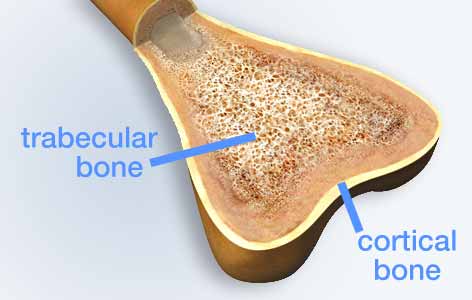
Ankylosing spondylitis is a debilitating form of arthritis that mainly affects the spine. As the disease progresses, complex changes in bone architecture occur. At early stages, the density of the minerals in the spine (ie, bone mineral density) is reduced, while at later stages the outer parts of the vertebrae thicken and fuse together.
To study disease progression, much of the existing research has relied on the use of X-ray images (radiographs) to measure changes in bone. However, because radiographs are two-dimensional, they are unable to show the differences between the harder outer bone and the spongy inner bone.
A recent study, led by TGHRI Senior Scientist Dr. Angela Cheung along with Krembil Senior Scientist Dr. Rob Inman and TGHRI Scientist Dr. Janet Raboud, used newer, high-resolution imaging to analyse the changes to bone architecture in three dimensions. Their findings revealed that in those with ankylosing spondylitis, the harder outer bone in certain skeletal regions had reduced thickness and reduced bone mineral density when measured in three dimensions. These regions were also found to be more porous. Surprisingly, no changes were found in the spongy inner bone.
"While previous findings have suggested that ankylosing spondylitis is associated with weakening of the inner, spongy trabecular bone, our results suggest that an important feature of the disease is that the compact, outer cortical bone becomes compromised. Because cortical bone is weight bearing, these results may explain why those with the disease are at increased risk of vertebral fractures," explains Dr. Cheung.
These findings provide much needed insight into changes that occur in the bones of those with ankylosing spondylitis that will inform the development of new ways of diagnosing and treating the disease.
This work was supported by Amgen Canada and the Canadian Institutes of Health Research. AM Cheung holds a Tier 1 Canada Research Chair in Musculoskeletal and Postmenopausal Health.
Alterations of bone mineral density, bone microarchitecture and strength in patients with ankylosing spondylitis: a cross-sectional study using high-resolution peripheral quantitative computerized tomography and finite element analysis. Nigil Haroon N, Szabo E, Raboud JM, Mcdonald-Blumer H, Fung L, Josse RG, Inman RD, Cheung AM. Arthritis Research & Therapy. 2015 Dec 24. [Pubmed abstract]




